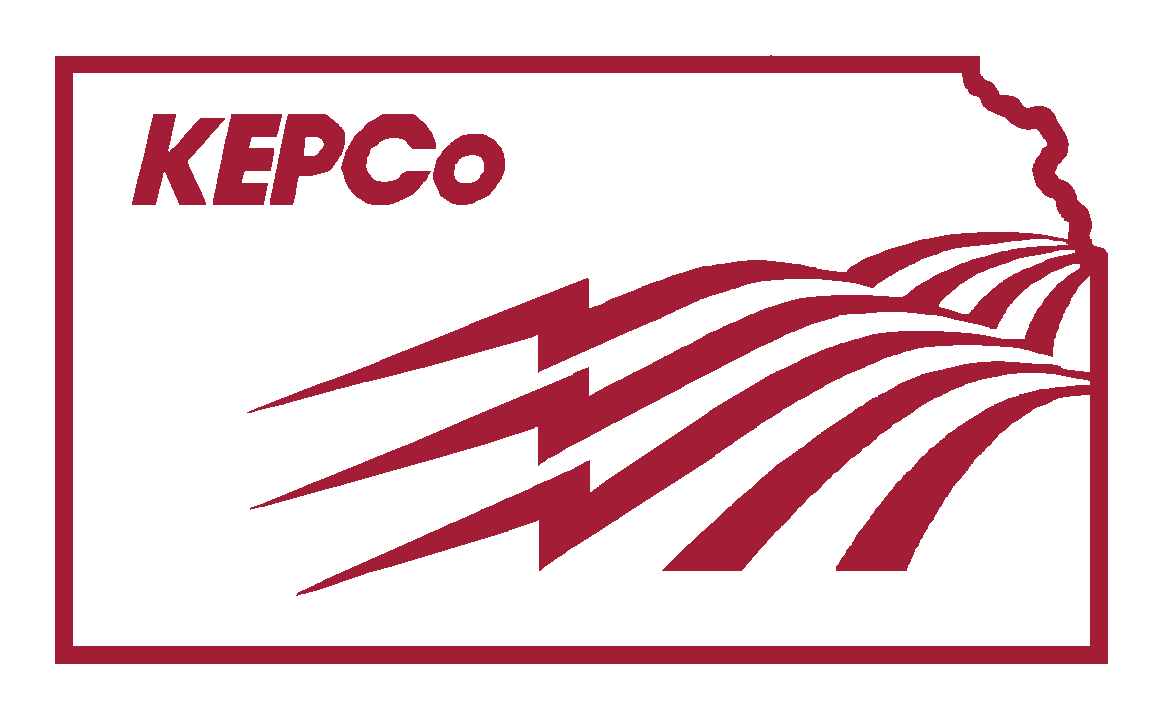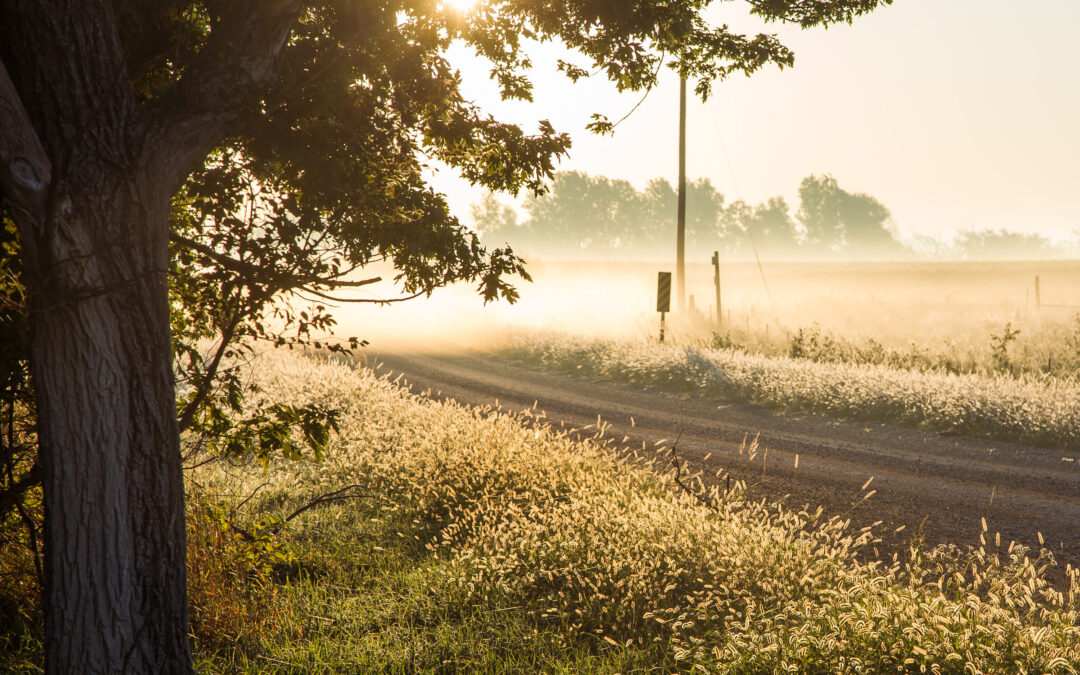A Moment with the CEO
BY SUZANNE LANE
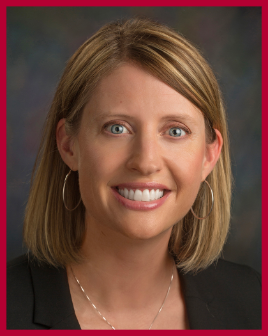
Celebrating National Co-op Month
Like I’m sure many Kansans can attest, fall is a time of year that heralds the return of many of our favorites—the changing color of leaves, cooler temperatures, pumpkin spice everything, and most importantly, the celebration of cooperatives during October, which is National Co-Op Month! Across our great country, there are more than 40,000 cooperatives of all types, supporting jobs that provide more than $25 billion in wages, while fulfilling the mission with which every type of co-op aligns—serving members. KEPCo is honored and proud to be one of the co-ops in Kansas working hard every day to serve our members and the members they serve at the end of the line.
So, as we take a moment in this edition of Newsmaker to celebrate electric cooperatives, I want to share the seven cooperative principles, and provide insights as to how these core pillars correlate to the KEPCo family:
- Voluntary and Open Membership: Electric cooperatives provide so much more than simply electricity. They provide a wide variety of programs and services, and they do so in an open and voluntary way. At KEPCo, our 16 distribution cooperative members voluntarily committed to the responsibilities of membership decades ago, with the current membership agreement running through 2045. Not only does KEPCo provide our members with their power supply needs, but we provide numerous value-added member services and programs — many of which are services and programs that non-cooperative utilities do not offer their customers. For example, KEPCo provides legislative and regulatory advocacy, a member investment program, a robust load management program, load and power cost forecasting, and a rebate program for high-efficiency appliances. Providing additional services and programs to our members is one of the key principles that sets electric cooperatives apart from other utility sectors.
- Democratic Member Control: At an electric cooperative, members directly participate in establishing policies, making decisions, and democratically controlling the cooperative. In KEPCo’s case, each of our 16 members has one trustee representative who acts as the member’s voting delegate, providing one vote per member on such key issues as board leadership elections, policy changes, budgets and other financial decisions, long-term planning initiatives, and other strategic business needs. Electric cooperatives provide their members a “front seat, at the table” view and involvement in the decision-making process — something I value as a co-op leader and something that other utilities do not offer.
- Members’ Economic Participation: Cooperative members directly contribute capital to their cooperative in the form of patronage capital, which helps assure the financial solvency and success of the cooperative. In many cases, co-ops have policies whereby their membership receives capital credits in the form of a check or bill credit when certain financial metrics are fulfilled. This is yet another way that members are closely engaged in the support and success of the cooperative. In KEPCo’s case, our 2023-27 strategic plan includes a financial planning study in 2025, which will help guide us on financial policy amendments for the future—including but not limited to evaluating our capital credits retirement plan.
- Autonomy and Independence: There is an often-used expression among cooperatives that if you’ve met one co-op, you’ve met on co-op. In the cooperative community, one size does not fit all; each cooperative has its own individual operating characteristics, load profiles, membership, resources, successes, and challenges. Thus, this principle is the foundation of the cooperative model and everything we do here at KEPCo — to be independent, self-governed, and autonomous, which allows co-ops to solely focus on serving their members in a way that works best for each individual co-op.
- Education, Training, and Information: As one of many value-added services that co-ops provide in addition to keeping the lights on, communication, training, and education is paramount. At KEPCo, we continuously communicate with and provide development opportunities and information to our board of trustees, members’ staffs and boards, our employees, our industry partners, and elected officials.
- Cooperation Among Cooperatives: Working together towards a common goal of serving the rural customers at the end of the line is something that additionally contributes to electric cooperatives standing out among other utilities. At KEPCo, we not only work closely with our member cooperatives, but with our statewide association, other cooperatives in the state, G&T co-ops across the country, and our national association to advocate for key co-op issues, share information on best practices, strategize about issues, and help each other become as strong and successful as possible.
- Concern for Community: Supporting the communities where members serve and live is yet another key pillar of the cooperative model. Whether it’s participating in volunteering activities, financially contributing to local charities, or supporting economic development efforts through our tariffs and the RUS REDLG program, KEPCo is proud to support the Kansas communities we serve.
On behalf of the entire KEPCo team, we wish everyone a happy National Co-op Month and an enjoyable fall and holiday season.

Generating Safety:
Fall Into Safety
Fall is a wonderful time of year. The leaves soon will be changing, kids are back in school, there’s football to watch, and the weather is especially pleasant – lower humidity, fewer bugs, and better sleeping temperatures. But as we enjoy this wonderful season, here are a few tips to help you do so safely.
- Inspect your fireplace before lighting the first fire. One of the simple joys of autumn is warming up in front of a fireplace, but before doing so, be sure to have it cleaned and inspected before lighting the first fire of the season. A buildup of soot and creosote can cause a chimney fire and a backup of dangerous carbon monoxide gas into your home.
- Burn candles safely. While glowing candles make any environment feel cozier, remember to keep burning candles away from anything that could catch fire, such as curtains, bedding, or books. Also, always extinguish a candle before going to bed or leaving the house.
- Watch for deer. Wildlife is on the move in the fall, so watch carefully for deer, turkeys, and other critters crossing the road in front of your vehicle. They are most active from dusk through dawn. Remember that some animals, deer in particular, frequently travel in groups; if you see one, more are bound to follow.
- Be alert for slow-moving vehicles. In rural areas, fall brings the harvest season with large farming equipment on the roads. Be alert for slow-moving vehicles and give them plenty of space. Also, be aware that they may turn unexpectedly into fields or driveways. And always remember that just because you can see the equipment does not mean the equipment driver can see you.
- Wear proper protection when handling outside tasks. Beautiful lawns and gardens have been enjoyed all summer but now is the time to prep them for a cold winter. Leaf blowers can be loud and blow more than just leaves, so wear eye and hearing protection to stay safe from flying debris and to preserve your hearing from the dangerous effects of repeated exposure to loud noises.
- Clean gutters safely. Falling is a common reason for emergency room visits. When cleaning gutters, work as a team when using the ladder. Ladders can buckle or slip, so have someone hold the ladder when climbing up and down. Keep your body weight-centered over the ladder; don’t reach too far. It is better to move the ladder periodically than to fall.
- Perform routine maintenance on your furnace. It won’t be long before the need arises to turn on the furnace. Now is the time for routine maintenance to be performed by a professional. For a natural gas or propane furnace, having the heat exchanger checked for cracks can prevent carbon monoxide leaking into the home. Fall is also a good time to replace filters. Furnace filters are designed to improve air quality and also to protect HVAC systems from build-up of dirt and debris. Ideally filters should be replaced every six months, or more frequently depending on the size of the filter.
- Fall is a good time to get a flu shot. A flu shot helps protect against influenza. After getting vaccinated, it takes about two weeks to develop antibodies to protect against influenza. Therefore, getting vaccinated early in the fall is recommended.
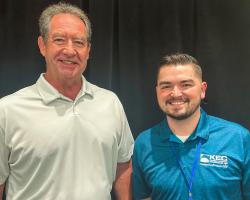
KEPCo Attends RESMA Lobbying Clinic
Phil Wages, KEPCo Director of Member Services, Government Affairs, and Business Development, attended the Rural Electric Statewide Managers Association (RESMA) Lobbying Clinic in Missoula, Montana. The clinic was attended by electric cooperative lobbyists from across the country and government relations staff from NRECA. The clinic was sponsored by CFC, NRTC, CoBank, and Federated Insurance.
“The lobbyist clinic is an opportunity to network with other electric cooperative lobbyists and to learn about issues in other states that Kansas electric cooperatives are facing or may be facing in upcoming sessions, as well as to learn about strategies and bill language that has been used or is planning to be used in support of or in opposition to particular legislation,” said Phil Wages.
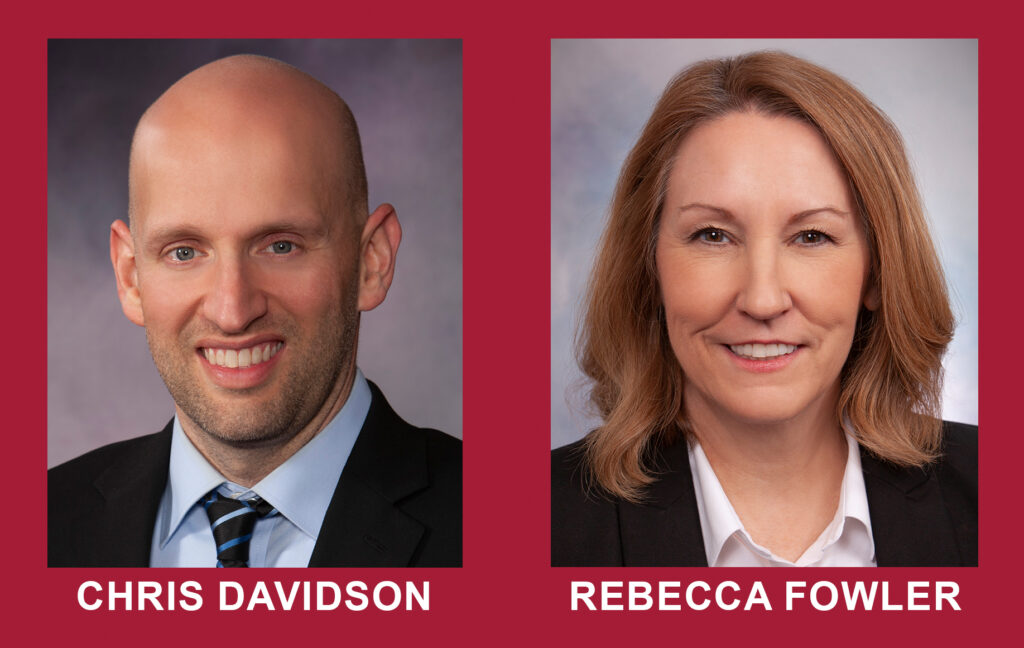
Promotions at KEPCo
Chris Davidson has been promoted to Manager of Engineering. He previously held the position of Senior Engineer. Chris has been with KEPCo for 11 years.
Rebecca Fowler has been promoted to Director of Regulatory Affairs. She previously held the position of Manager of Regulatory Affairs. Rebecca has been with KEPCo for four years.
Congratulations to Chris and Rebecca!
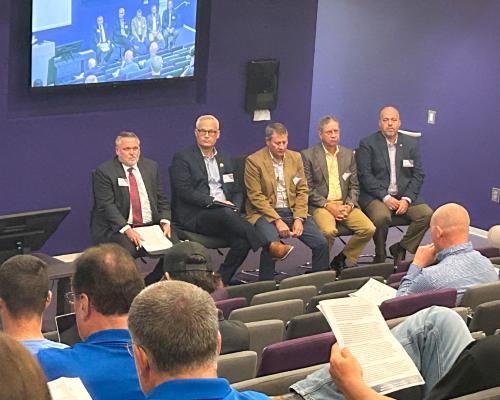
Barbee Speaks at KSU Solar Symposium
Mark Barbee, KEPCo SVP & COO, along with Colin Hansen – Kansas Power Pool, Corey Linville – Sunflower, Paul Mahlberg – Kansas Municipal Energy Agency, and Doug Shepherd – KEC Consultant, comprised a panel of electric utility experts who discussed the barriers, opportunities, and strategies for solar energy for the benefit of rural communities in Kansas.
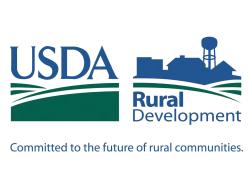
REDLG Activity
Two USDA Rural Economic Development Loan and Grant (REDLG) program applications submitted this summer have been selected for funding. The first is a $2 million REDLG loan approved for Secured Semiconductor Manufacturing, LLC (SSM). SSM had a groundbreaking ceremony for their 30,000 square foot manufacturing facility on September 1 at the Coffey County Airport, at which Senator Jerry Moran was the keynote speaker. Sen. Moran was joined by state legislators and local officials, as well as principals of SSM. This facility is in 4 Rivers’ territory.
SSM has stated their parent company, FLMST Capital Management Group, is scheduled to install five tier 1 supply companies in Coffey County, which will produce diodes, grommets, capacitors, power supply boards, and transistors.
The second REDLG application selected for funding is the Arbor House Event Locale & Stables, LLC, which is in DSO’s territory. Located in Bennington, Kansas, the project will host events, concerts, and other gatherings, as well as offer overnight lodging for guests. This project is expected to create two full-time and three part-time positions.
Combined, these two projects result in over $22 million of capital investment and more than 65 new jobs in rural Kansas.
In addition, a $665,000 REDLG application was submitted in late September for the expansion and modernization of an existing dairy operation located in Junction City. This application is anticipated to be considered before the end of the year.
“With commercial lending rates continuing to be elevated compared to previous years, KEPCo has seen increased interest and utilization of the REDLG program this year. USDA informed KEPCo that the number of REDLG applications in the fourth USDA fiscal quarter was greater than the other three quarters combined. As rural businesses and entrepreneurs seek affordable financing, KEPCo is pleased to assist our member cooperatives with this important economic development tool,” said Susan Cunningham, KEPCo SVP & General Counsel.
KHRC to Apply for Solar Funding
On June 28, 2023, EPA released the Greenhouse Gas Reduction Fund’s $7 billion Solar for All Notice of Funding Opportunity. Through this competition, Solar for All will award up to 60 grants to states, territories, Tribal governments, municipalities, and eligible nonprofits to expand residential solar investment in low-income and disadvantaged communities.
Kansas Housing Resources Corporation (KHRC) submitted a Notice of Intent to apply for the Solar for All funding. A stakeholder meeting was held mid-September, which KEPCo attended. At the meeting, KHRC staff stated that the Solar for All program will be modeled after the KHRC Weatherization Program.
Kansas will be eligible for a grant between $25 and $100 million. If KHRC is awarded Solar for All funding in 2024, services are anticipated to begin in mid-2025 and KHRC anticipates completing 2,490 rooftop installations at a cost between $16,000 and $20,000 per installation.
